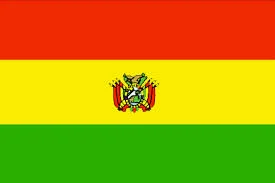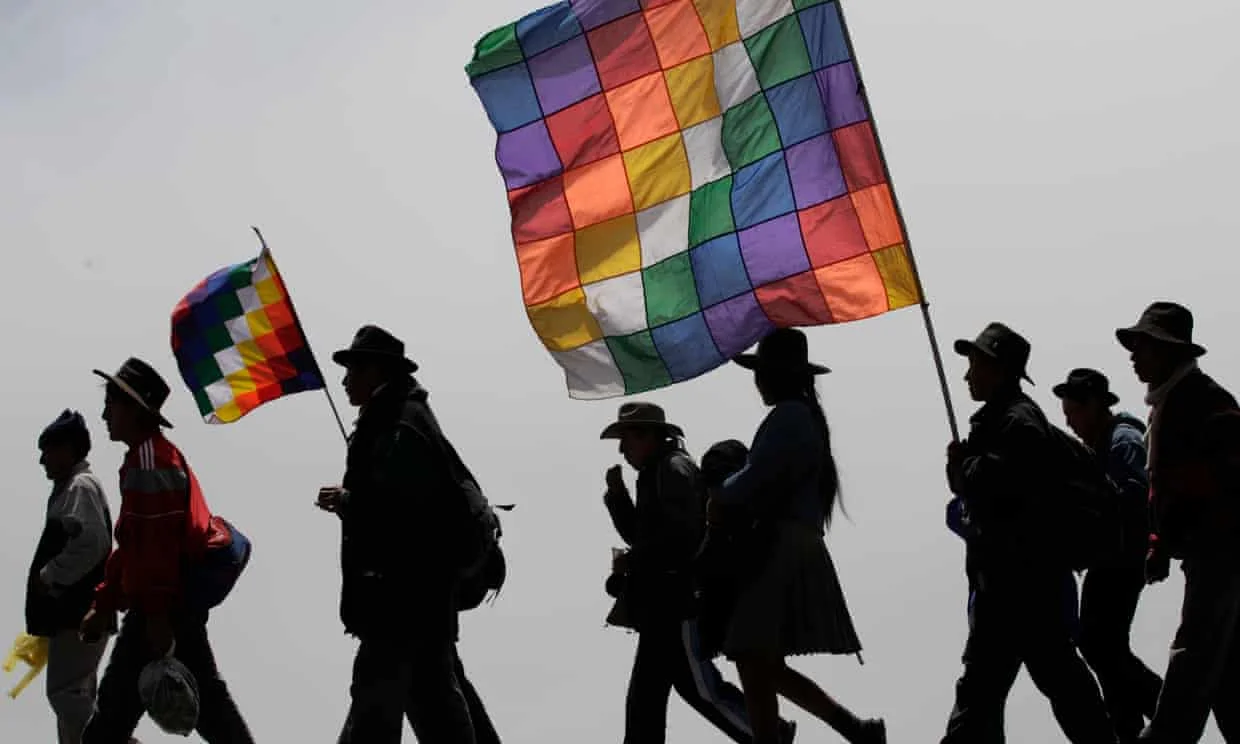Bolivia has been in the midst of a major water crisis for more than a year now. Residents of the city of La Paz are under strict rationing rules. Glaciers are melting at an alarming pace. What was once the country’s second-largest lake has dried up. But some would argue that a major factor behind the crisis is an economic model that prioritizes the needs of resource-thirsty industries over those of ordinary citizens.
Morales: We need more dams so there is no lack of water
Beatriz Layme focuses her 2016 article for the Pagina Siete within an issue in Bolivia that has been ongoing- water and drought. She writes about how President Morales has begun to frame the construction of the El Chepete and El Bala dams as sources of water so it will be impossible to run out. She also writes about the vigil indigenous people held at the construction site of these dams that made Geodata, an Italian company, remove their equipment from the site.
Evo: If La Paz wants the El Bala dam, fine; If it doesn't, that is fine too
President Evo Morales said yesterday that "if La Paz wants (El) Bala, fine; if it doesn't, that is fine too."es not want, too," after he was asked for his opinion about the "resounding rejection" of the indigenous peoples to the construction of the hydroelectric projects of El Bala and El Chepete.
"I want to tell you that if La Paz wants (El) Bala, well; if he doesn't want to, not too, but we save our responsibility and that (from) here at 20, 30, 40, 50 years don't say that (is) 'because of Evo has not had Bala or because of Álvaro (García Linera). "We have made considerable progress, knowing who to blame," said the Head of State during a press conference held at Palacio Quemado.
Pagina Siete, like other media outlets, reported yesterday that indigenous peoples expressed their "resounding rejection" of the construction of the two dams for undermining their rights and all forms of life. In addition, they granted a period of 72 hours to that the National Electricity Company (ENDE) and the Italian Geodata paralyze activities and remove the machinery from the place, otherwise they will take actions in this regard.What do we know about El Bala and Chepete?
This 2016 video describes “Bolivia's largest investment equivalent to its current external debt explained in a 12-minute video”—the Chepete and El Bala hydroelectric projects. “What size will the reservoirs be? How many inhabitants will be affected? What will happen to the flora and fauna? What will be the impact on deforestation and climate change? Will it be profitable? These and other key questions to understand this mega project.”
The video is in Spanish, however, English language closed captioning is also shown below. You can access the video here.
Government socializes El Bala y Chepete project
This 2 minute, 4 second video is of an ATB news report from 2016. You can access this Spanish language news report here.
Bolivia to carry out final design studies for 3,251-MW El Chepete, 425-MW El Bala hydro projects
An Expedition Reveals Stunning Biological Wealth in a Bolivian Park That May Be Opened to Drilling
Andrew C. Revkin published this article in 2015 in the New York Times. Revkin overviews Madidi National Park and the scientific expedition which discovered thousands of new species previously unknown to inhabit the park, and a thousand species new to science. Revkin also outlines developments of a new law in Bolivia that opens up a large part of previously protected areas to oil and gas companies.
Flooding Madidi by Roger McDonough on PRX
Bolivian President Evo Morales has given the go-ahead for a mega dam that will flood one of the earth's last great expanses of biodiversity while forcing the relocation of indigenous tribes from their Amazon home. The announcement comes on the heels of a presidential decree allowing oil and gas exploration in Bolivian National Parks. To learn more, producer Roger McDonough speaks to Bolivian agro-ecologist Dan Robison, who has long been involved in promoting sustainable resource use in the Amazon.
There are contracts to explore 11 of the 22 protected areas
In 2015, Gabriel Díez Lacunza wrote an article for the Pagina Siete. He details the exact percentages of how 11 protected areas in Bolivia are opened for oil and gas company exploration contracts. He also discusses the Supreme Decree 2366 and how it further opened protected areas to hydrocarbon contracts. Lacunza outlines how zoning works in these protected areas and how oil and gas companies can use them to their advantage when looking for contracts.
Bolivia opens up national parks to oil and gas firms
In his 2015 article for the Guardian, David Hill outlines the results from the study ‘Identidad Madidi’ as well as the potential impacts these discoveries would face from the new law that opens up protected areas to hydrocarbon exploration contracts. He also claims the law violates Bolivian indigenous communities rights.








